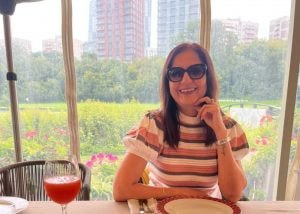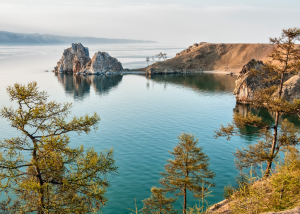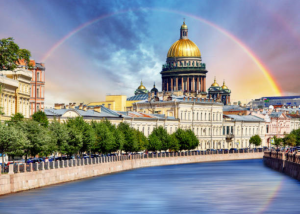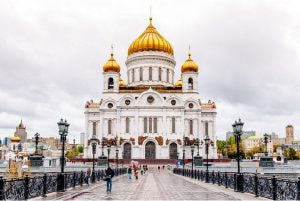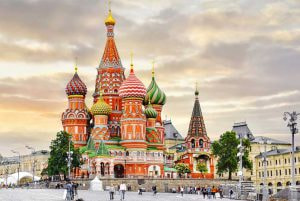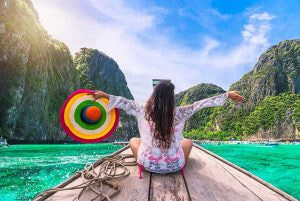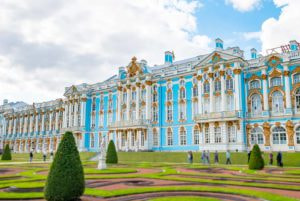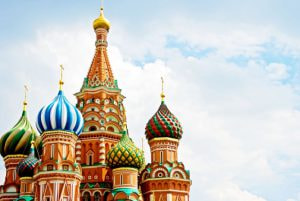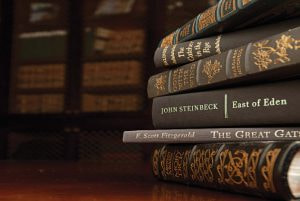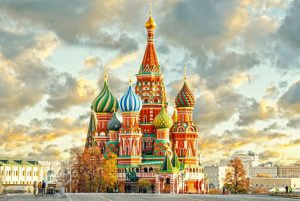Dear Traveler,
We sincerely thank you for your interest in booking our Tour to Europe. As you know all tours may vary from destinations to destination. We wish to brief here certain procedures for booking and conditions on the tour to make your holiday memorable. We request you to book the tour only after complete reading and after full acceptance of our terms and conditions.
Brochure Accuracy:
All information given in the Brochure / Itinerary / Sightseeing Tours are based on the information available at the time of publication. We reserve the right to change any brochure / itinerary before or after booking of your tour due to any event beyond our control. In case if we will know about any changes before your departure we will update or communicate with you otherwise our Tour Manager or Local Representative will inform you of the changes on the tour. We have provided information to the best of our knowledge and we will not be held responsible for any inaccuracy in brochure.
How to book Customise Tour Package
- Upon receiving inquiry request, our travel consultants will start to assist you in building a pleasant travel plan according to your special requirement and interest.
- Upon receiving package confirmation we will start to check as per current availability of proposed hotel or similar & rates / airline rates / internal flight & train rates & send final package cost
- Kindly accept the package confirmation in written to process the booking
- It is compulsory for customer to check the hotel reviews on booking.com /
- Trip advisor and give final confirmation in Email.
- Upon the receipt of a deposit we’ll secure your reservation and process your final booking immediately & will be confirmed post 48 hours of process
- However, it is possible that at the time of booking (and especially during the peak season) the hotel or the room category mentioned by us is full. In that case we will give you an alternate hotel or an alternate room (higher category or lower category). Change in costs, if any, will be intimated to you and balance payable by you or to you will be paid by you or refunded to you as the case may be.
- Once your booking is confirmed, we will send you a confirmation letter with the proposed flights, hotels, and tours in details. Should any conditions change after the confirmation, we reserves the right to make changes and provide you with the similar alternative options
- These package is customizable, which means that changes can be done to the itinerary/activity, if you desire so. Any alterations may result in additional payment & the final payment will be calculated as per the changes made in the itinerary which will be outlined in the confirmatory e-mail sent to you.
- Kindly fill our Booking Form and Submit Dully Signed with Terms & conditions of booking
- Passport Copies of First and Last Page of All Passengers (All Passport Must be valid minimum 6 months valid from the date of your return and it’s solely passengers responsibility to check before submission. Any booking which has been action on non-valid passport passengers are liable to pay any charges incurred due to the same)
- Deposit Amount: Rs.50000/- per person to secure your Tour and if booking is within 60 Days of Travel then deposit require as per the payment required on that particular date as per payment policy mentioned below.
- Copy of your PAN Card.
- 3 Years IT Returns of all travelling passengers (whoever has it)
- Final Vouchers can only be issued once full payment received
- No amendment requests will be accepted 10 days before the departure
Validity of Rates , fares & Taxes
- All the rates are subject to change without any prior notice
- Costing of the current tour is based on current Airfare and Taxes as on October ‘2018. Any further increase in airfare OR taxes due to increase in the fuel price, change in government Regulations, taxes, etc., charged by the airline will have to be borne by the passengers that may be before or after booking of tour.
- All rates are strictly subject to availability at the time of booking from Airlines, Hotels, Meals, Sightseeing, Coaches, Train Tickets (if any) etc.
Tour Cost , Taxes & Rate Of Exchange
- ROE will be determined on the day when you make the final payment.
- All our Tours are priced in two parts Indian Rupees and Foreign Currency Amount (which is EURO / Great British Pound / Swiss Francs depending on Tour / Destination you choose to visit). However the cost must be paid in India before your departure in Indian Rupees only. Foreign Exchange Amount will be converted to Indian Rupees with the prevailing rate of exchange of respective currency on the day when you make final Payment towards forex part.
- The initial deposits & initial payments will be towards the INR or Indian rupee payments. Later, as and when you pay towards foreign exchange component, the rate of exchange is counted towards the forex rate prevailing on that day exchange rate.
- Initial Deposit will be considered towards Indian Rupees part only.
- Addition to Tour Cost 5% Service Tax is applicable on entire tour cost unless specified in the Inclusions.
Hotels & Apartments
- Generally rooms in European hotels are very compact and small in size( Approx 15m2-18m2)
- Unlike Asian or other countries most of the hotel rooms in Europe are relatively small and not all hotels have air-conditioners or fan due to climatic conditions.
- Most of the Hotels will accommodate up to 3 persons in room and for your comfort also accept minimum of 3 persons in one room.
- Most hotels have more Twin rooms. Double rooms are available upon request but not guaranteed. If the Double room is not available a Twin room will be given.
- Please note that size of the Double and Triple rooms are usually the same. In Triple room, third bed is typically a roll- away bed or an extra bed.
- Please note that standard check in time is 1500 Hrs and Check out is 1100 Hrs in Europe. (It may vary from Hotel to Hotel)
- Room Rates are based on Standard Rooms. Supplement cost will be applicable for Sea Facing /Lake Facing / Deluxe / Suite Rooms.
- Allocation of the Rooms are done only while check-in by the Hotel Front Desk and are not in our limits.
- Adjacent rooms/ Rooms on same floor cannot be committed or guaranteed.
- Cooking anything in the hotel is strictly prohibited, in case of not following the rules, heavy penalties are levied to the passenger.
- Any damage caused by the passengers in the hotel or apartment rooms. For example: Breakage of any assets, oil stains in the rooms, scratches on the glass or wooden flooring. Heavy penalties will be charged by the hotel to be borne by the passengers. Such penalties will be charged on the refundable deposit paid at the properties or asked additionally.
- As tap water is drinkable in Europe. Hotels do not provide complimentary drinking water.
- Tea Kettles are not provided in all the Hotel Rooms, we suggest to carry your own.
- Most of the times Wi-fi is not available in the rooms, can be accessed only in the public areas like - lobby of the Hotel.
- No room services/ No bell boy / No proterage at any Hotel / Apartment
- On check in, in Apartments & Hotels, Refundable Deposits are blocked at every Hotel / Apartments on forex card or Credit card only. It may take upto 15 Days to 1 Month for the deposit to reflect back into your account.
- Incase of Apartment Booking immediate 25% cancellation charge will be applicable in any case & further cancellations will be applicable as per policy and a few apartments are also non refundable kindly check at the time of Booking
- Early Check in & Check out subject to availability & not guarantee basis
- Tourist city taxes to be paid locally by passenger at each individual hotel upon check in
SIC Tours (Seat In Coach) & Sightseeing
- Seat in coach tours have a city centre pick up. City centre point to be reached on your own, it is the responsibility of the customer to ensure that they reach on time at the designated place of pick up & If you are unable to reach on time then it will be considered as no show & no refund will be given for any unutilized service & customer will have to make their own private arrangement of missed tour at their own cost.
- Optional sightseeing has to be booked in advance on your own by paying an additional cost.
- SIC tours have fixed route & itinerary & will not deviate from the same
- Please note that Eiffel Tower ticket time slots to go up needs to be pre – purchased and the same has very limited availability. If the same is not available we may have to queue up and the queue may last up to 2 to 3 hrs.
- Many times due to strong wind or overcrowding on the 3rd level they stop the sale of the tickets and / or do not allow going on the top (3rd floor). In that case there will be no refund on the tickets.
- Any monuments entrance does not included in SIC tours unless specified
Notes For Private Tour:
- It is strictly not allowed to eat, drink or smoke inside the Coach.
- It is compulsory to wear Seatbelts in the vehicle.
- Coach Captains are bound by European laws and restrictions about driving hours per day and per week. All itineraries are planned as per them. Therefore it is absolutely essential for passengers to follow the time very strictly and punctually.
- Our coaches will not have any WIFI facilities on board.
- Final itinerary is compiled by keeping European driving laws & regulations in consideration
- Guests are required to adhere to the timings as mentioned in the itinerary.
- All services are confirmed as per the timings mentioned in the itinerary.
- Any delays will result into curtailment or complete cancellation of service.
- We shall not be responsible for any alternate or compensative arrangements.
- Guests are requested to present themselves minimum 30 minutes before commencement of any service.
- Guests are requested to carry their passport at all times & produce when required by the local governing authority.
- Any extra service/s consumed beyond confirmed service has to be paid & settled directly.
- If Tour Manager Not included then Lead passenger has to take responsibility for time/place co-ordination with the drivers, hotels, restaurants, guides, attractions entrances, etc.
Please note EC regulations for Long Distance Coach Drivers:
- Driver is not to exceed 12 hrs on duty with the group
- The duty time with the group would be reduced as required,
- Incase the Coach parking location is someplace other than group stay hotel
- In one day, a driver is not permitted to drive for more than 9 hrs
- In one day, a driver must have 11 consecutive hours of rest
- Driver is required to have a min. rest time of 45 minutes for every 4 hours of wheel time
- One driver could drive maximum 12 days continuously then 2 days rest is mandatory.
- Coach will not remain at disposal as per clients request
Validity Of Rates, Airfare &Taxes:
- All the rates are subject to change without any prior notice
- All rates are strictly subject to availability at the time of booking from Airlines, Hotels, Meals, Sightseeing, Coaches, Train Tickets (if any) etc.
Payments And Options For Payments:
Payments are accepted in Indian Rupees only. Payments can be made by Cheque, Bank Transfers, Demand Drafts, Cash (Maximum upto INR 49000/- per person with PAN Card Copy) and Credit Cards.
- Copy of PAN Card is required if Payment is made by cash and is more than Rs.50,000/-
- If you are paying by Credit Card 1.24% of the amount paid by the card will be charged additionally on and above the tour cost.
Refunds:
- There will be no refund on unutilized services or partly utilized services.
- Due to reasons beyond our control such as strikes, heavy traffic, rain etc. or you did not use services such as Meals, Entrance Fees, Sightseeing Tour, Hotels, Cruises, Optional Tours it is clearly understood that there will be no refund due to any reason whatsoever.
- Any refund (if due) process will take minimum 30 days or the time taken as per the supplier policy on whose services needs to be refunded.
- Refunds will be given in Indian Rupees and through Cheque or Bank Transfers only in your account even though payment is done by cash.
- If refund is due in foreign currency the ROE will be considered on the day when the payment was made.
Visas:
- As an International Traveller one is obliged to obtain necessary visas for their required Travel.
- As your tour operator we may give guidance to obtain for your visas but granting of the visas are solely at direction of respective consulate / embassy only.
- For the guidance we will charge and that amount may include Visa Fees, Costs Incurred in the Process.
- Please note that for UK visas person has to go and submit their documents on their own. We can only help and assist with preparation of documents and seeking the appointment for the submission.
- The entire visa Fees and Charges are non-refundable and in case of non-availability or denial of the visas. You are liable to pay Visa Charges Stated by us plus any cancellation charges (if falling in cancellation period). (Stated as above in Cancellation Policy).
- All visa must be processed at least 75 Days prior to your departure date. We must get all visa documents as per requirement minimum 75 days prior to your departure date to Process visas on time for your successful travel however giving documents on time does not guarantee visas or on time availability of visas.
- All the Visa Documents needs to be sent before 70 days (Or stipulated period) and incase of non-compliance of visa documents or late documentation passengers are liable to pay Cancellation Charges.
- Passengers confirming tour within 45 Days of travel date may face cancellation or date change of departure due to inadequate time for the visas. Heavy charges may apply on the same. However Flamingo will not be held responsible in case of any delay, rejection or non-availability of visas from the Consulate and passengers are liable to pay all the additional charges occur because of the same.
- Granting Visas and Granting Visas on time is solely at the discretion of Embassy / Consulate. We act only as a facilitator for obtaining Visas. Consulate may ask you or entire family to appear personally for Interview or Biometrics. Any cost incurred for this must be paid by the passengers only.
- For any rejection or non-availability of the visas Passengers are liable to pay Cancellation Policy Stated above and Flamingo Transworld under any circumstances will not be held responsible or liable for any cancellations.
- If you are unable to travel on the Tour you have booked due to any error on the part of Embassy / Consulate or Incorrect Visas or Delayed Visas you shall have an option to travel on future date tour or change in your Individual Bookings. Amendment and Cancellation charges applicable and are to be borne by the passengers only.
- Consulates are not in Ahmedabad. Your travel cost and arrangements for travelling to Delhi/Bombay or any place due to personal calls Or submissions is totally on your account only.
CANCELLATION CHARGE INCASE OF VISA REJECTION (Before 60 Days of Departure):
- If UK Visas rejected Rs. 17,500/- Per Person + Ticket Cancellation as Actual
- If Schengen Visas rejected Rs. 15,000/- Per Person + Ticket Cancellation as Actual
- If UK & Schengen Visas rejected Rs. 32,500/- Per Person
(Within 60 Days of Departure):
Cancellation will be charged as normal Tour Cancellation Policy as mentioned above
*5% Service Tax is applicable on all cancellation amounts.
Cancellation And / Or Amendments By Traveler:
- All cancellations / amendments must be received in Writing to us either by email or Fax and has to be followed by a phone call by a concerned traveler. Once received we shall action the same in 24 to 48 Hours.
- Any Amendments you make after booking the tour will be treated as new booking and will be Strictly Subject to availability and rates available at the time of changes requested. If the same is made within cancelation period, cancellation charges will apply. Also it is must to put this requests in writing and get confirmation is writing from our side. For any amendment the company reserves right to charge Rs.5000/- per transaction on and above any additional cost / amendment charges / applicable cancellation.
- If you wish to deviate your tour from the group on return to India the same is permitted. You will have to pay Rs.5000/- per deviation plus difference of Airfare as per availability of the date you wish to travel on. Pre - Tour deviations are not possible on Group Airfare. If you wish to go earlier than Group Departure Date than you are required to pay the difference of Individual Airfare and Group Fare.
- Any request to Change the tour date will be treated as cancellation on the last tour and fresh booking on the new tour. Cancellation charges will apply as stated above on the tour you are cancelling. New Tour may have different pricing even though may have a same itinerary and passengers are liable to pay the new tour charges.
- Please note that Flamingo Transworld will be not be liable to pay any Cancellation Charges / Compensation / Expenditure if you are unable to join the tour due to any illness, court orders , non-availability of travel documents or visas, the same has to be borne by passengers only.
